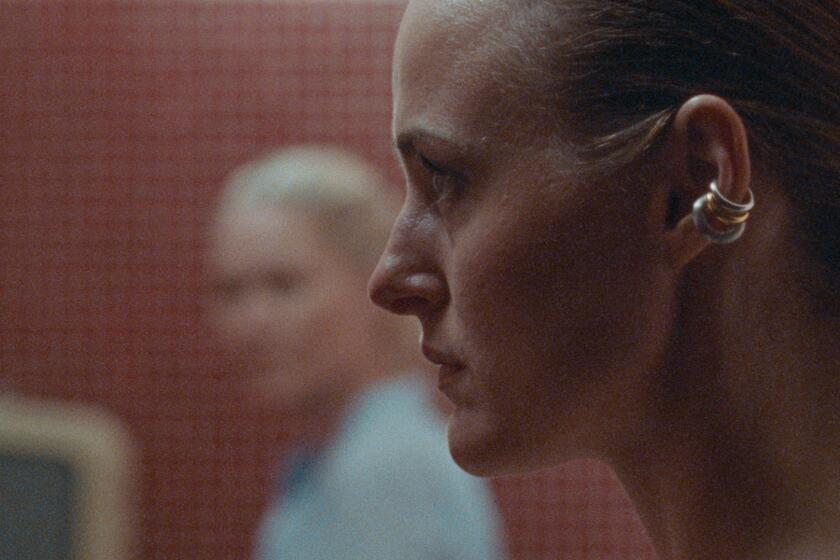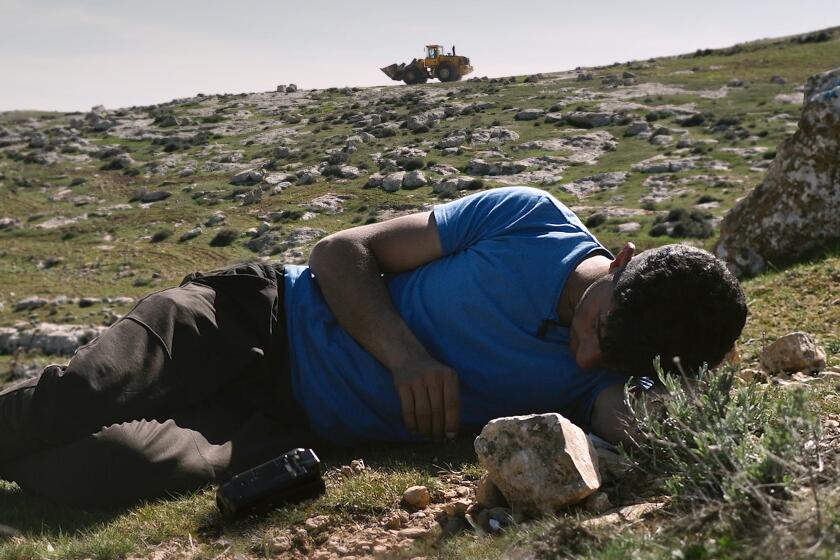He Inadvertently Eased Oskar Schindler’s Path to Safety : Death camps: Documentary filmmaker finds that the fate of a retired printer’s own family is likely to make a lot of Americans uneasy.
- Share via
SCOTTSDALE, Ariz. — He’s a retired printer living in Arizona who unwittingly ensured Oskar Schindler’s passage to safety in the uncertain days after the fall of the Third Reich.
He also recently became a key figure in an unsettling documentary about American attitudes toward Jews in the days of Adolf Hitler.
Kurt Klein, now 74, had a quirky encounter with Schindler at the end of World War II that probably saved Schindler from confinement in a detention camp.
Schindler, the man made legendary by Steven Spielberg’s film “Schindler’s List,” was a German industrialist who saved more than 1,000 Polish Jews from the death camps by bribing officials to let them work in his factory.
Documentary filmmaker Martin Ostrow also has told a story about the Holocaust. But his indictment is not of Nazi Germany, but of the U.S. government and, by extension, American society.
*
It is about Kurt Klein, and, through him, about countless others who were prevented from saving Jews.
A few years ago Ostrow began researching a historical film on the Jewish experience in America before and during World War II for PBS’s “American Experience” series. He wondered if Adolf Hitler’s persecution of Jews was a subject of conversation in this country.
He was surprised to find that Americans seemed barely aware of the atrocities that began in the 1930s and culminated in the death camps during World War II.
“I learned the story was very different than what I thought was the truth,” he said. “I found people didn’t know very much until after the war.”
Ostrow ended up making a very different film than he’d planned, one that explored why Americans knew so little about the Holocaust while it was happening.
What he found through research and interviews with historians might be unsettling to some Americans. Kurt Klein had firsthand knowledge.
Klein left his hometown outside Heidelberg, Germany, in 1937 at age 17 to escape the growing specter of Nazism. Following in the footsteps of his sister, he settled in Buffalo, N.Y.
His brother came the next year. Their parents planned to follow later.
Soon after arriving in Buffalo, Klein and his siblings tried to get their parents safe passage to America. But he ran into bureaucratic roadblocks.
He corresponded with his parents, who were first in Germany, later in France. They described Kristallnacht, the “night of the broken glass” on Nov. 9, 1938, when Nazi storm troopers and Hitler Youth destroyed Jewish properties.
“We never intended they would come immediately,” Klein said from his home in this Phoenix suburb. “But Kristallnacht changed all that. A tremendous panic set in.
“Everybody then wanted to leave, and by and large, many countries didn’t want them.”
After two years of trying to get to the United States, Klein’s parents were deported to France, where they lived under control of the collaborationist Vichy government.
Now his parents needed myriad visas to get out: French exit, Spanish and Portuguese transits, American entrance. They couldn’t secure the U.S. entrance visas. There was talk of quota regulations, additional requirements and other impediments.
“We thought (the U.S. authorities) were putting up a tremendous amount of red tape,” Klein said. “Even when you completed all the requirements, nothing happened.”
Filmmaker Ostrow concluded that U.S. government indifference and actual preventive measures ensured that possibly hundreds of thousands of Jews who might have been saved died at the hands of the Nazis.
His investigation led to the documentary, “America and the Holocaust: Deceit and Indifference,” which aired in April.
Ostrow says that although most Americans were in the dark about the extent of the atrocities in Europe, that wasn’t the case with certain people in the government.
“The people whose business it was to know, did know,” he says.
Although immigration quotas often were cited as the reason for denying entry to Jews, historian David Wyman states in the documentary that the United States never came close to filling its quota for immigrants from Germany.
The documentary cites a memo from Assistant Secretary of State Breckenridge Long recommending that U.S. diplomats in Europe “postpone and postpone and postpone” granting visas to Jews.
As the 1930s came to a close, Klein had entered his third frustrating year of trying to bring his parents to safety.
“As soon as we complied with all the requirements, they dreamed up new ones,” he said. “We had testimonies saying that my parents were not politically active. After producing them we were told we had to get testimonies about the people who gave the testimony to show that they were not politically active either.”
Eventually, he even went to Washington to plead with the State Department.
In January, 1942, he got a letter from his parents saying they had almost obtained the coveted American visa, but were told to come back to the consul in another week.
The letter was dated Dec. 6, 1941.
The next day, the Japanese attack on Pearl Harbor sealed the wartime fate of America and, with it, that of Klein’s parents. He received his last letter from them in June, 1942.
After the war, Klein found records in Paris that said they had been deported “in the direction of Auschwitz” in August, 1942. They became two of the 6 million Jewish victims of Nazi death camps.
By November, 1942, Klein was a U.S. soldier. He ended up a 1st lieutenant in the Army’s 5th Infantry Division, an interrogator, thanks to his fluency in English and German.
On May 6, 1945, he first encountered survivors of the Nazi camps. In a Czechoslovak factory were 120 women who had been on a forced march all winter. Their guards had just abandoned them. At one time they numbered 4,000. Among them was Klein’s future wife.
A few days later Klein came face to face with a second group of refugees, including Oskar Schindler.
It was Klein’s job to determine where Germans and other refugees were to be sent. Schindler, as director of a Nazi labor camp, should have gone to an American detention center. He even could have been tried as a war profiteer for running a labor camp, although he actually saved the lives of thousands.
But Schindler was being smuggled away from danger by some of the Jews whose lives he had saved. They were trying to get him out of Czechoslovakia, away from Germans, Russians and even Americans.
More to Read
Only good movies
Get the Indie Focus newsletter, Mark Olsen's weekly guide to the world of cinema.
You may occasionally receive promotional content from the Los Angeles Times.










